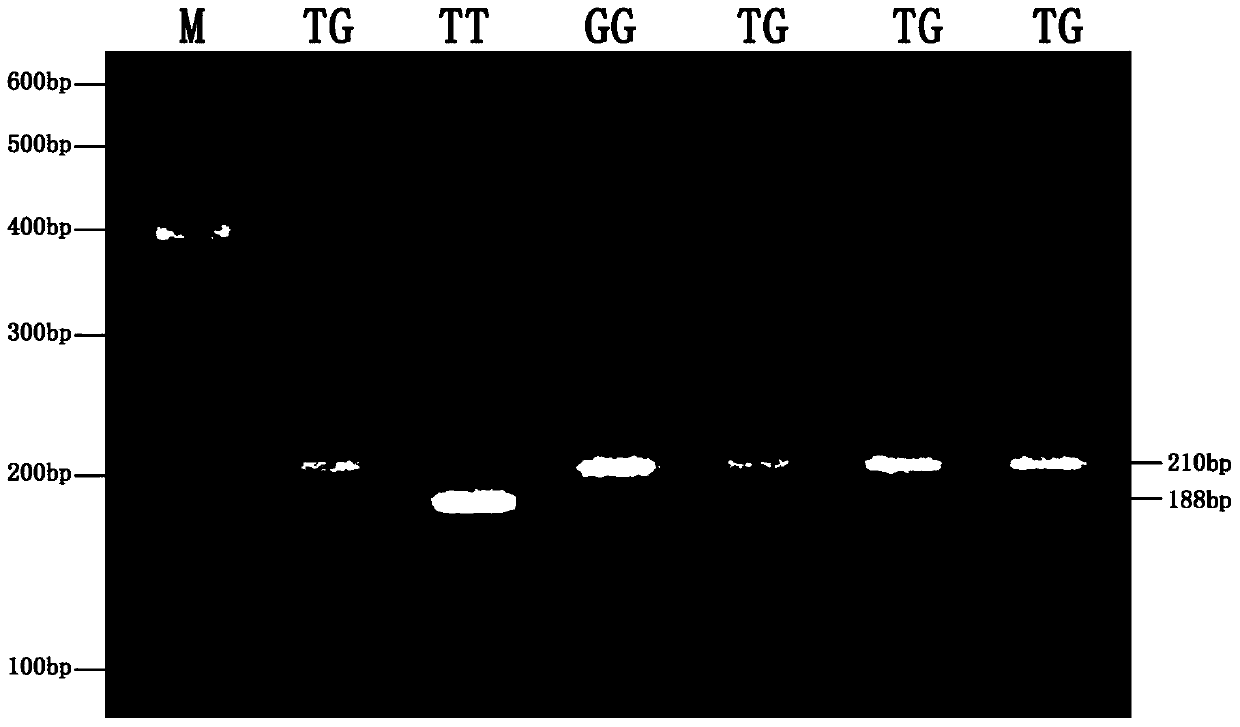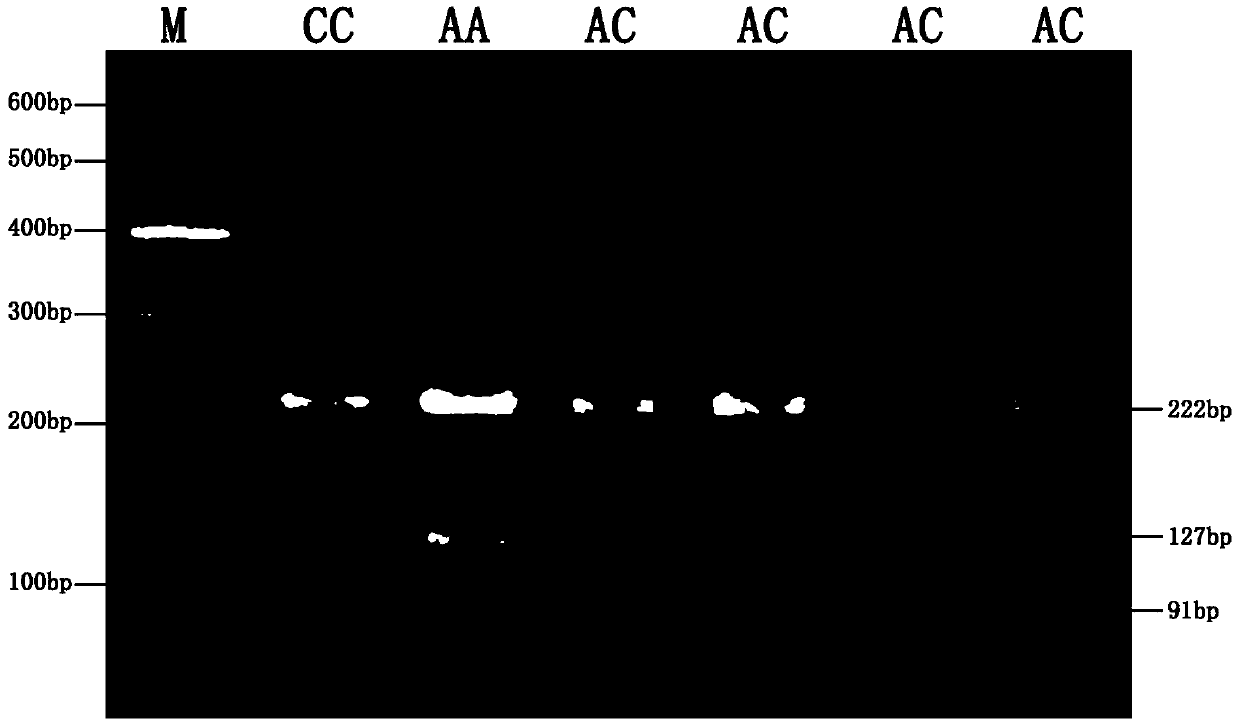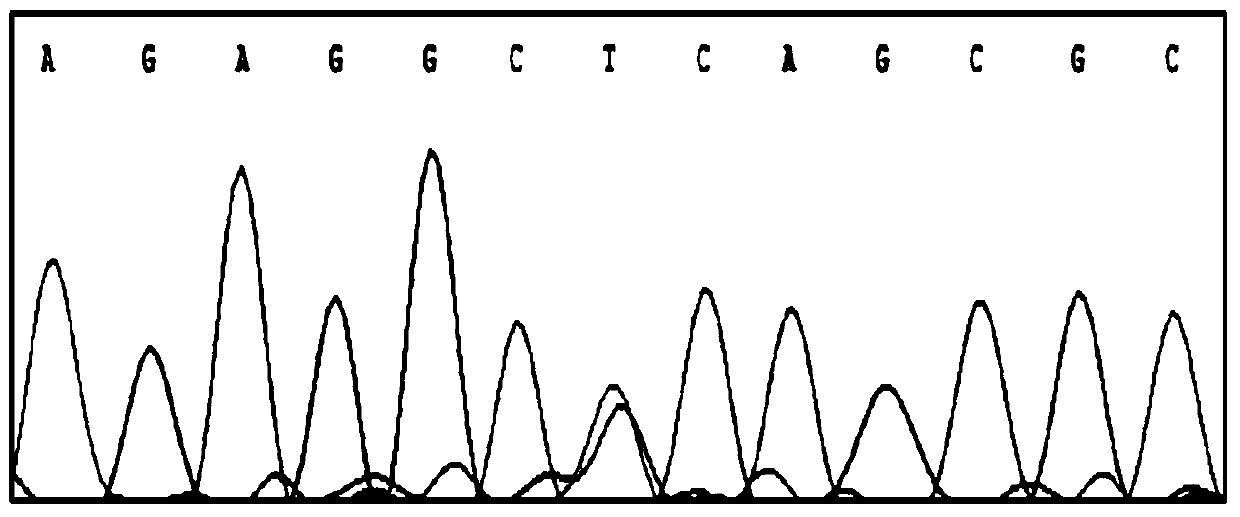PCR-RFLP (polymerase chain reaction-restriction fragment length polymorphism) method for detecting single nucleotide polymorphism of Pax3 gene of yellow cattle and application of method
A PCR-RFLP, single nucleotide polymorphism technology, applied in the field of molecular genetics, can solve problems that have not yet been reported, and achieve the effect of low cost and high accuracy
- Summary
- Abstract
- Description
- Claims
- Application Information
AI Technical Summary
Problems solved by technology
Method used
Image
Examples
Embodiment Construction
[0032] The present invention designs primers according to the Pax3 genome sequence, uses genomic DNA pools of five cattle breeds as templates, performs PCR amplification, purifies PCR products, and obtains partial sequences of cattle Pax3 genes after sequencing. The present invention will be described in detail below, which is an explanation of the present invention rather than a limitation.
[0033] a. Cloning of partial DNA sequence of cattle Pax3 gene and detection of its polymorphism
[0034] 1. Sample collection and genomic DNA extraction
[0035] (1) Collection of blood samples
[0036] In the present invention, 1241 yellow cattle from 5 local yellow cattle breeds in China are used as detection objects, and the samples collected are shown in Table 1: Nanyang cattle (220), Jiaxian red cattle (398), Qinchuan cattle (224), Luxi cattle (166) and Prairie Red Bull (233).
[0037] Table 1 Sample source
[0038]
[0039] (2) Extraction of genomic DNA from blood samples
...
PUM
 Login to View More
Login to View More Abstract
Description
Claims
Application Information
 Login to View More
Login to View More - R&D
- Intellectual Property
- Life Sciences
- Materials
- Tech Scout
- Unparalleled Data Quality
- Higher Quality Content
- 60% Fewer Hallucinations
Browse by: Latest US Patents, China's latest patents, Technical Efficacy Thesaurus, Application Domain, Technology Topic, Popular Technical Reports.
© 2025 PatSnap. All rights reserved.Legal|Privacy policy|Modern Slavery Act Transparency Statement|Sitemap|About US| Contact US: help@patsnap.com



